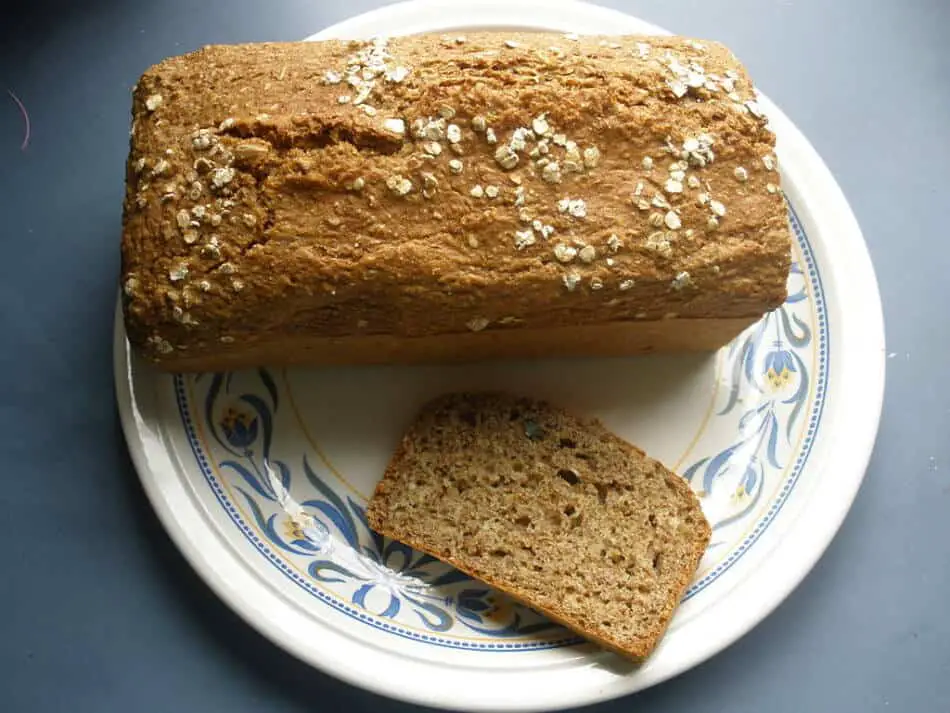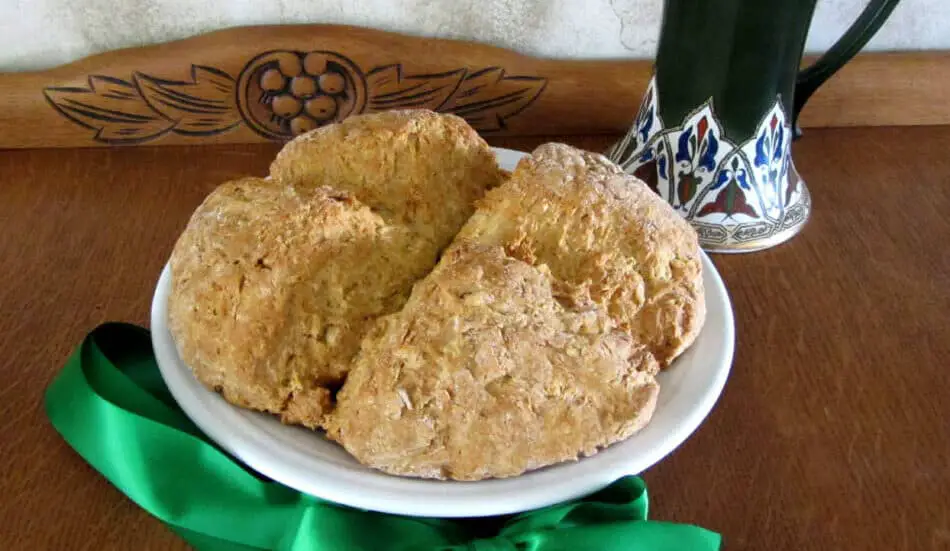The main difference between sourdough bread and soda bread is in its leavening agent; sourdough bread rises due to the gasses released from yeast and bacteria fermentation while soda bread rises from the gasses produced during the chemical interaction between baking soda and acids in the dough.
Since the leavening agent in sourdough and soda bread are different, the two types of breads require different ingredients and baking process, which produces different flavor and texture of the bread.
Leavening Agent: Yeast and bacteria fermentation VS Baking soda
Sourdough breads are leavened through a living culture of wild yeast and bacteria found naturally in the sourdough starter culture. These yeast and bacteria consumes sugars in the dough to produce carbon dioxide gasses which are trapped inside the dough by many layers of gluten, which causes the dough and bread to rise.
Soda bread on the other hand are leavened from the interaction of baking soda (sodium bicarbonate) and acids in the dough. Baking soda is an alkaline base which undergoes a chemical reaction in the presence of acids and water to produce carbon dioxide gasses; these gasses are trapped inside the dough by the gluten layers which causes the dough and bread to rise.

Ingredients: Type of Flour, Source of Hydration, and Source of Acid
| Main Ingredient | Sourdough Bread | Soda Bread |
| Flour | High protein flour | All purpose flour |
| Source of Hydration | Water | Milk & Buttermilk |
| Salt | Salt | Salt |
| Leavening Agent | Sourdough Starter | Baking Soda and Acid |
Sourdough bread uses high protein flour as these flour contains a high quantity of gluten that is able to trap more gasses in the dough which causes the dough and bread to rise well. Soda bread on the other hand uses all purpose flour which contains less gluten, and is not able to trap gasses well, which leads to the classic dense crumb of soda breads.
The source of hydration for sourdough bread mainly comes from water, with only some recipes that calls for the inclusion of a small quantity of milk or butter milk. Milk and buttermilk replaces water in soda breads, which contains the hydration required to bring the dough together, and for the baking soda and acid to undergo the necessary gas producing chemical reaction to rise the bread.
Sourdough bread is leavened using a sourdough starter while soda bread is leavened using baking soda and a source of acid. The source of acid in soda bread typically comes in the form of butter milk, lemon or vinegar.
Buttermilk contains both milk and lactic acid, hence when buttermilk is used, we do not have to use milk or introduce any further source of acid into the dough. When milk is used instead of buttermilk, lemon or vinegar is typically added as the source of acid required to react with baking soda to produce the rising gasses.
Substituting baking soda with baking powder:
Baking powder is a complete leavening agent, it contains both sodium bicarbonate and a source of acid. Hence, when using baking powder in the bake, we do not need to introduce any additional source of acid into the dough.
However, the leavening ability of baking powder is a lot weaker than the leavening of baking soda with a source of acid. When substituting baking soda with baking powder, we need to use 3 to 4 times more baking powder than baking soda to achieve the same rising ability.
Baking Process: Fermentation and Mixing Time
The differences in the leavening agents between sourdough bread and soda breads renders differences in how these two breads are prepared and baked.
Since sourdough bread relies on fermentation to rise, the dough is required to go through a relatively lengthly bulk fermentation and final fermentation process which takes about 6-8 hours to complete. During this period, temperature and the degree of rise in the dough is closely monitored to ensure that the dough is not overproofed or underproofed.
Soda bread on the other hand is a type of quick bread which does not need any fermentation time; soda bread can be baked immediately after mixing is completed. Once the baking soda and liquid in the soda bread dough comes in contact, it will immediately produce a strong quantity of carbon dioxide gasses, unlike sourdough bread which requires many hours for a sufficient quantity of carbon dioxide gasses to be produced from fermentation to rise the bread.
Sourdough breads are also mixed for a longer time to fully develop the gluten matrix in the high protein flour, which allows the dough and bread to rise tall, producing a relatively light and airy crumb. Soda bread on the other hand is mixed only for a short period of time, until the ingredients are incorporated, as we do not want the bread to rise as much.

Flavor and Texture: Sourdough vs Soda Bread
Sourdough bread has a light and airy crumb structure compared to soda breads. Soda breads are typically denser from the use of low protein all purpose flour and a short mixing time, reducing the amount of gluten in the dough, impairing the dough’s ability to trap gasses and rise.
Sourdough bread has a more complex flavor profile than soda breads due to the fermentation reaction in sourdough bread. The fermentation reaction in sourdough bread not only produces gasses for the bread to rise, but also produces organic acids which imparts a pleasant sourness and complex flavor to the bread. Soda bread however has a richer, milkier taste from the fats in the milk and buttermilk.

